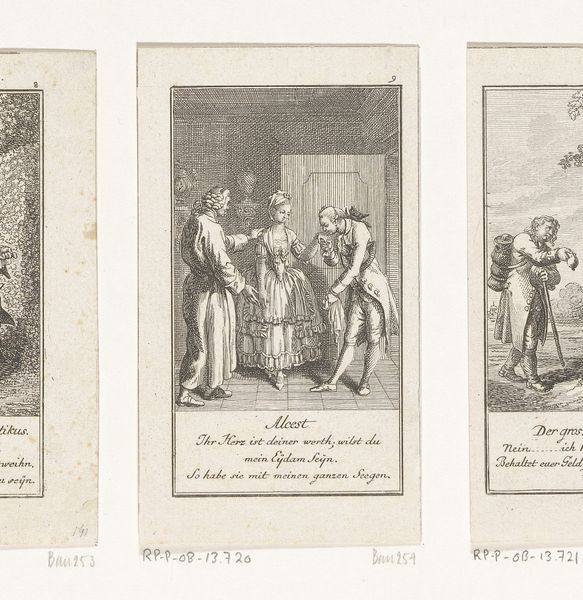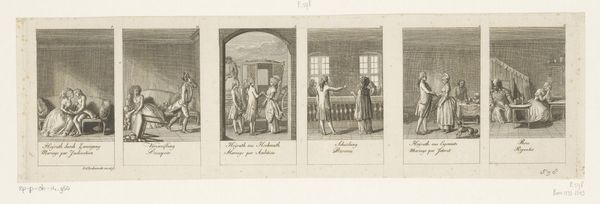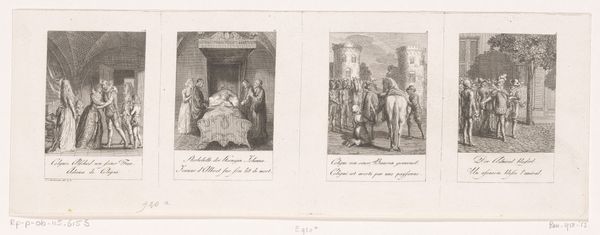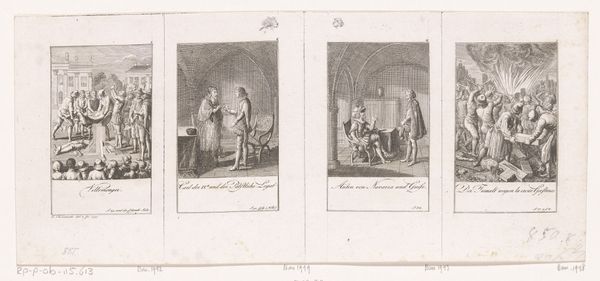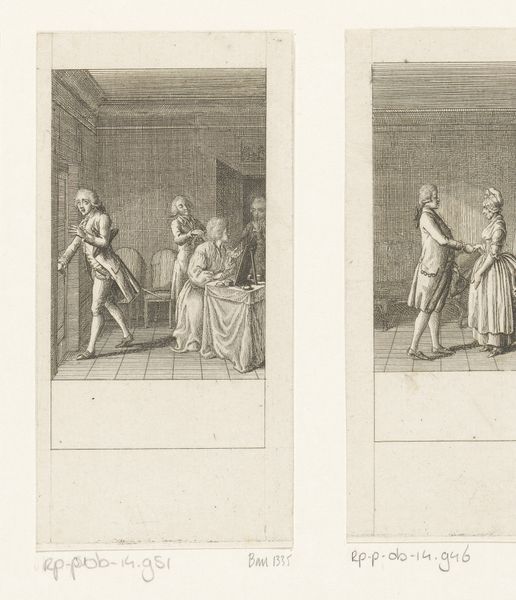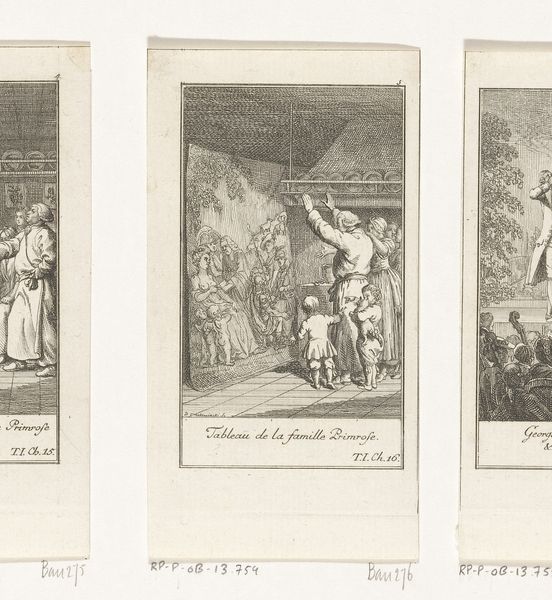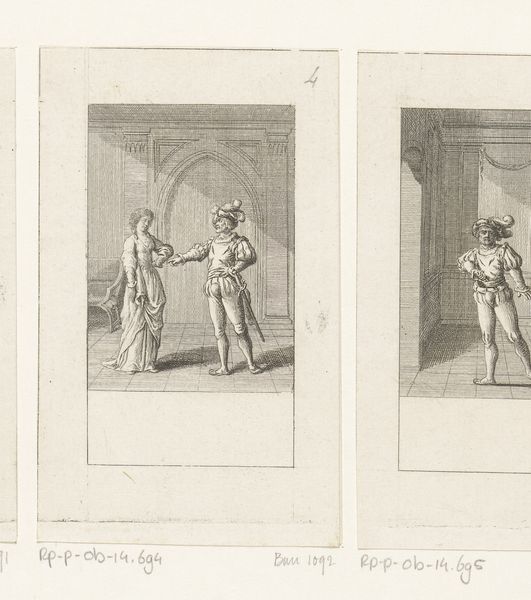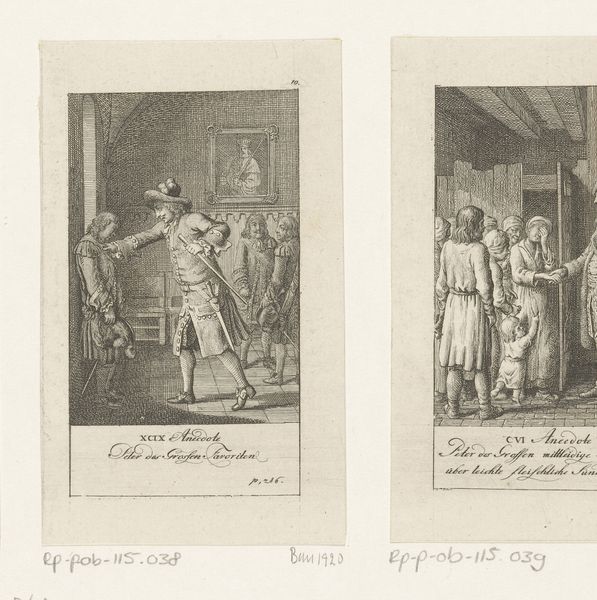
Vier voorstellingen uit de geschiedenis van de Bartholomeusnacht 1799
0:00
0:00
print, etching, engraving
#
toned paper
#
narrative-art
# print
#
etching
#
romanticism
#
history-painting
#
engraving
Dimensions: height 124 mm, width 337 mm
Copyright: Rijks Museum: Open Domain
Editor: This print, "Vier voorstellingen uit de geschiedenis van de Bartholomeusnacht," or "Four Scenes from the St. Bartholomew's Day Massacre," was created in 1799 by Daniel Nikolaus Chodowiecki. It appears to be an etching or engraving on toned paper. The series of small scenes feels almost like a storyboard for a tragic play. How do you interpret this work? Curator: It's crucial to consider this print through the lens of historical trauma and religious conflict. The St. Bartholomew's Day Massacre was a horrific event, a flashpoint in the Wars of Religion, revealing deep seated societal divisions and the dangers of religious fanaticism. Editor: It's interesting to see something so violent portrayed with such… restraint, almost like a stage play, as I said. Does that speak to the artist's intentions? Curator: Chodowiecki, working in the late 18th century, was engaging with Enlightenment ideals even while depicting pre-Enlightenment brutality. The choice of a series of small, contained scenes allows viewers a mediated experience. Are we meant to passively observe, or to critically examine the roots and consequences of such violence? How might issues of power, and identity intersect? Editor: So, you're saying the format itself— the print medium, the sequential narrative— invites us to analyze the power structures at play? Curator: Precisely. Consider the role of the artist in depicting such events. Who is he speaking to, and what social forces shaped his views? How does his own cultural identity inform his choices in portraying these historical moments, and who is centered in this version of the story? Editor: It’s sobering to consider the artwork not just as a historical record, but as an active participant in shaping how we understand such a violent event. Curator: Indeed. And how it resonates today.
Comments
No comments
Be the first to comment and join the conversation on the ultimate creative platform.
